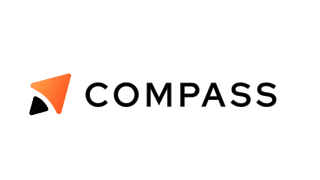
Every hour, millions of images are uploaded to the internet, making their way onto blogs and user-generated content sites. The bulk of those images include no watermarks or copyright notices. Many are reproduced without authorization by others capitalizing on the original photographer’s work.
Some photographers try to control that by registering and licensing their images through agencies. Those companies charge a hefty commission for every transaction. In many cases, a photographer can expect as little as 20 percent of the overall license fee when operating through these intermediaries.
Marcus Schmitt, CEO and founder of Singapore-based COPYTRACK, is using blockchain technology to help solve this pervasive problem. This technology has disintermediated everything from the supply chain to the healthcare business. Now, Schmitt hopes to decentralize online image licensing, too.
COPYTRACK has already built a successful business around copyright enforcement. The company offers an image search and matching platform for image copyright owners in 140 countries.
It is launching a blockchain-based global copyright register for image rights holders. Schmitt believes that the market opportunity for registering and protecting images is substantial.
“This is an endless market,” he said. “There are two billion images uploaded every day and we are seeing that increase by 30 percent each year.”
How It Works
COPYTRACK has photographers register on its blockchain-based service by properly authenticating themselves online as they might when opening a bank account. Then, the register will create a hash of each image they present, using both the photographer’s own data and data from the image as inputs.
This hash is stored on the blockchain, linking it immutably with that photographer and ensuring that no one else can claim ownership.
The blockchain client also uses technology to prevent someone from registering another photographer’s work first and claiming it as their own. Photographers can register their own cameras with the blockchain. When a modern digital camera produces an image, it stores metadata in that file proving that it was the source.
Photographers who register on the COPYTRACK blockchain gain access to the company’s existing copyright protection and enforcement service. When the enforcement service finds an infringer, it will charge them under the licensing terms that the rights holder has defined using the registry software.
“This was the missing piece of our system,” Schmitt said. “If you sign up for an account now, it’s free and we also search an unlimited number of images for you, for free.”
The CPY ICO
The global copyright register will also allow image users to make payments directly to rights holders using its native token, CPY.
“Infringers can pay with the usual currency, via PayPal or credit card, but you can also pay with our currency,” said Schmitt. “The advantage of that is that you save all of the bank and transfer fees.”
The whole thing is built on Qtum, the Singapore-based blockchain platform that raised $15.6 million in its own initial coin offering (ICO) last March. The blockchain’s flexible smart-contract functionality will enable COPYTRACK to extend its licensing interface, supporting new features such as programmatic contracts, variable pricing and payment routing. That’s something existing agencies can’t do.
The CPY ICO is open now and ends on February 9. The global registry launches in early summer and it’s just the start of a broader initiative that will eventually handle other media types.
“Images are only the first use case, because they’re our core market,” Schmitt said. “However, the blockchain is open for everybody. If someone wants to do that for music, text or video, they can use our blockchain as a register for their use cases.”
The COPYTRACK team will spend about six months after its launch developing an application programming interface (API) to support these extended use cases. But for the near term, it is concentrating on making sure that ICO investors get the big picture.
Note: Trading and investing in digital assets is speculative and can be high-risk. Based on the shifting business and regulatory environment of such a new industry, this content should not be considered investment or legal advice.










